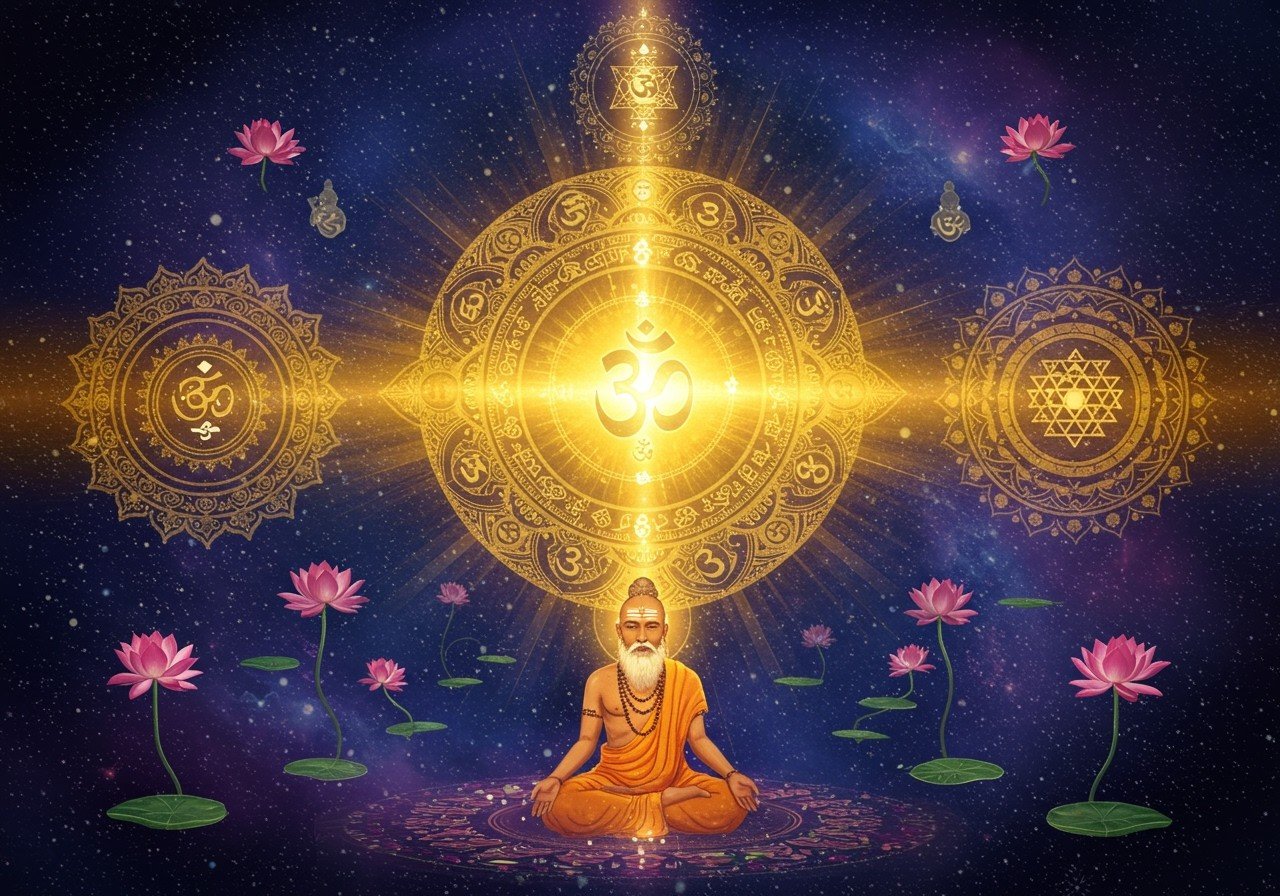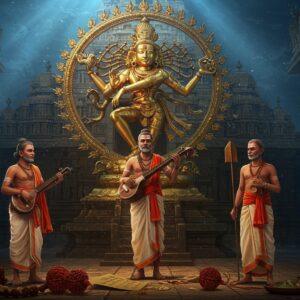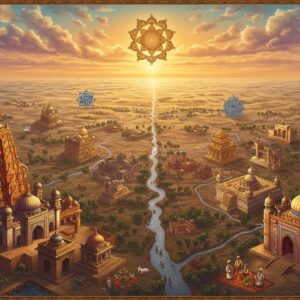
In Hinduism, the concept of Brahman holds a significant place as it represents the ultimate reality. This profound idea serves as the foundation for Hindu philosophy and spirituality. Brahman is seen as the infinite and unchanging truth that exists beyond time and space. It plays a vital role in Indian culture and religion, especially for those who cherish tradition and spiritual authenticity.
What is Brahman?
Brahman is described in Hindu scriptures as the source of all existence. It is beyond human understanding and cannot be fully described. The Upanishads, ancient texts, define Brahman with three main attributes: sat (existence), chit (consciousness), and ananda (bliss). There are two ways to think about Brahman: Nirguna (without attributes) and Saguna (with attributes). Different philosophical schools, like Advaita Vedanta, interpret these ideas in various ways. Realizing one’s own self, or Atman, as a reflection of Brahman is key to spiritual enlightenment. For a deeper understanding of Hindu philosophy, explore our collection of sacred texts and books at poojn.in.
Who Created Brahman?
Brahman stands as the eternal essence, not a creation. In Hindu thought, Brahman is the cause of all causes. This means it doesn’t fit into the cycle of birth and death like living beings. Unlike gods or humans, Brahman exists beyond time and space.
Hindu cosmology views Brahman as the ultimate source of everything. The Bhagavad Gita and the Vedas explain Brahman as endless and beginningless. These texts emphasize that Brahman transcends human understanding. Delve deeper into Hindu cosmology with our curated selection of books on Hinduism’s history and origins.
In simple terms, Brahman isn’t something that was made. It is ever-present and constant. This concept helps Hindu believers see the world as interconnected, with Brahman as its foundation.
What Does Brahman Mean in Hinduism?
Brahman takes on various meanings across Hindu traditions. It is both personal and impersonal. For some, Brahman is Ishvara, a personal god to whom one can pray. For others, it remains an abstract, impersonal truth. Learn more about the different deities in Hinduism at poojn.in. We offer a wide range of resources on Hindu deities, from Lord Indra to others.
In daily life, Brahman plays a key role in rituals, meditation, and moral decisions. Realizing Brahman is crucial for Moksha, or liberation from the cycle of rebirth. This liberation offers a sense of peace and unity with all. Enhance your meditation practice with our selection of meditation supplies at poojn.in. We offer everything from comfortable asanas to meditation beads.
Brahman’s influence stretches into art, music, and literature. These cultural expressions often depict the divine as a reflection of the ultimate reality. This shows how deeply ingrained Brahman is in Indian culture.
Brahman in Hindu Philosophy
Different schools of Hindu philosophy offer unique views on Brahman. Advaita Vedanta focuses on non-duality, teaching that Atman and Brahman are one. Knowledge (jnana) helps realize this unity.
Vishishtadvaita by Ramanuja suggests a qualified non-duality. Here, individual souls and the universe exist but are distinct from Brahman. Meanwhile, Dvaita by Madhva takes a dualistic stance, seeing Brahman as separate from individual souls.
These philosophical interpretations highlight the complexity of Brahman’s relationship with the universe and individuals. They guide believers on their spiritual path. For deeper insights into these philosophies, explore our collection of sacred texts on Hinduism’s origins at poojn.in.
Cultural Significance of Brahman
Brahman shapes Hindu identity and practices deeply. Rituals and ceremonies honor it as the ultimate reality. Festivals celebrate its presence in everyday life. Poojn.in offers a wide array of ritual items to enhance your spiritual practice. From pure copper kalash to traditional diyas, you’ll find everything you need.
In Indian art forms like classical music and dance, Brahman often appears as the divine ground of all being. Temple architecture reflects this too, with intricate designs symbolizing the universe.
Daily prayers and chants invoke Brahman, fostering a connection with the cosmos. In modern times, many seek spiritual growth through understanding Brahman, finding relevance in its timeless teachings.
Brahman’s enduring presence in Indian culture underscores its importance to those valuing tradition and authenticity.
FAQs on Understanding Brahman
What is Brahman in Hinduism? Brahman is the ultimate reality, the source of everything, beyond time and space, both formless and all-encompassing. It’s the single unifying principle behind all diversity.
Who created Brahman? No one created Brahman. It’s eternal, infinite, and the foundation of existence, existing beyond creation and destruction.
What does it mean when we say Brahman is formless? Brahman transcends physical form and shape. It’s present in everything but not limited by any specific form. It is beyond human comprehension and is more complex than any depiction of God in human form.
How does Brahman relate to the individual soul or Atman? Atman, the individual soul, is considered a part of Brahman. Realizing the unity of Atman and Brahman is a central spiritual goal in Hinduism.
Is Brahman the same as God in other religions? While similar to the concept of God, Brahman is not a personal deity. It’s an all-pervading reality encompassing all gods and goddesses.
How is Brahman described in Hindu texts? Hindu texts, especially the Upanishads, describe Brahman as infinite, eternal, and unchanging. The term comes from the Sanskrit root “brh,” meaning to expand, grow, or enlarge.
Why is Brahman important in Hindu philosophy? Brahman represents the ultimate truth and reality. Understanding it leads to spiritual enlightenment and liberation (moksha).
How do people try to understand Brahman? People seek understanding through meditation, studying scriptures, and devotional practices aimed at realizing the unity of Atman and Brahman.


